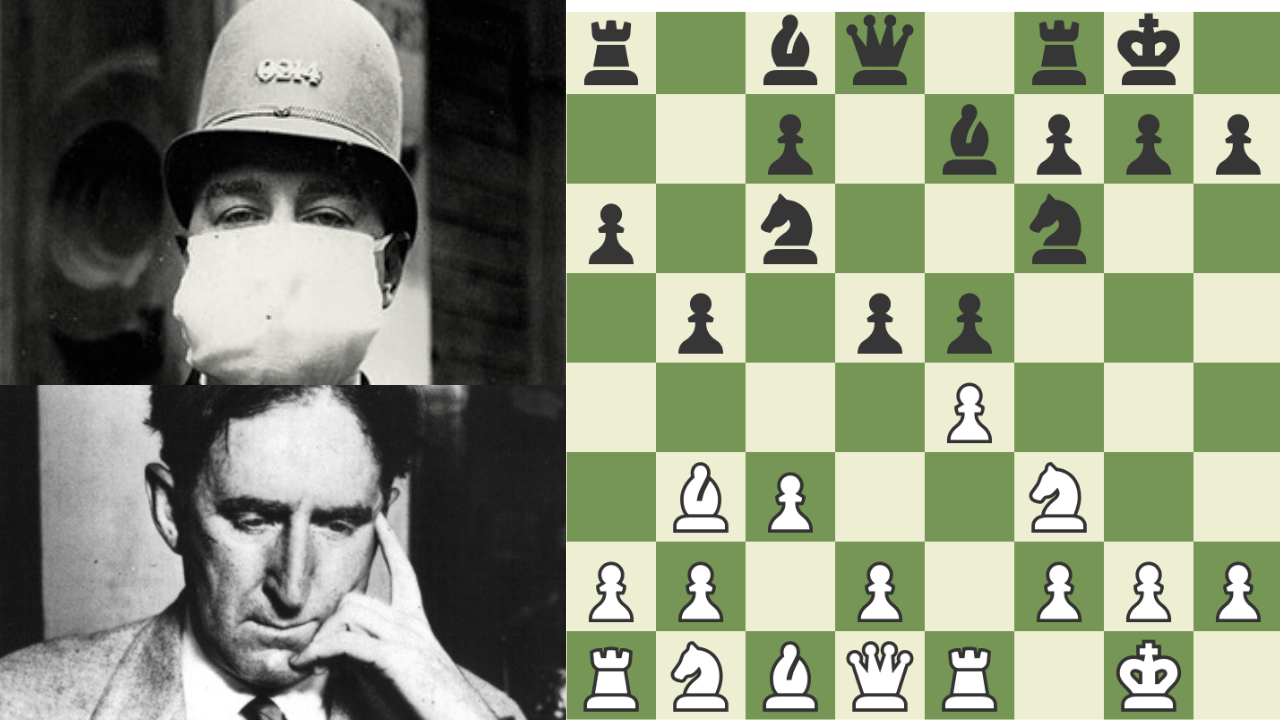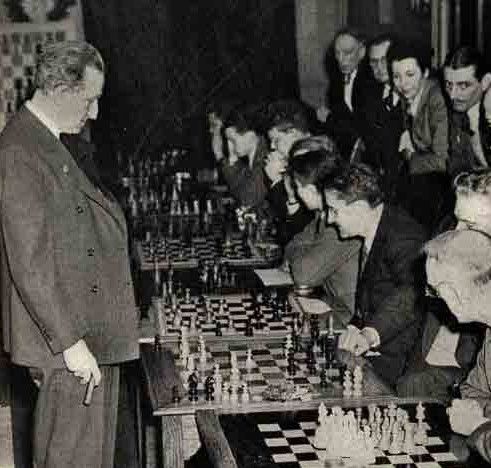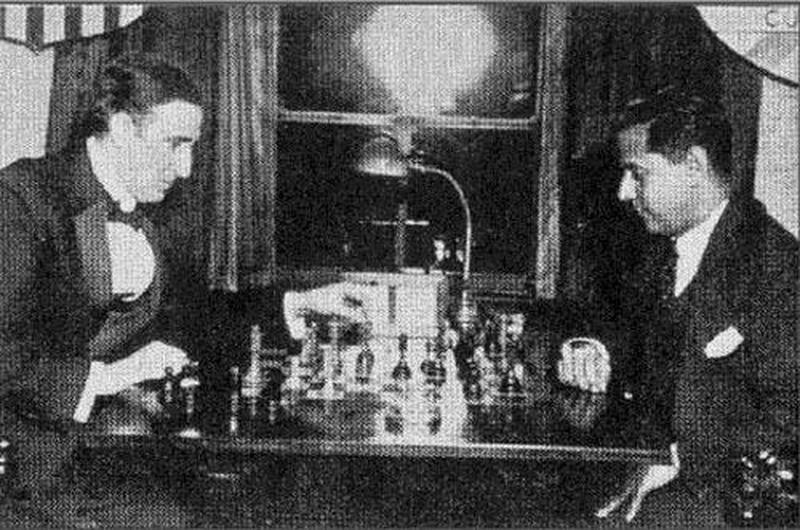
How The Marshall Attack Came To Prominence In An Earlier Pandemic
Amid the coronavirus pandemic, the now-postponed FIDE Candidates Tournament 2020 captivated the chess world. This event recalls another match between top players during a similar public health crisis. The year was 1918, and the emergency was a massive flu contagion (commonly known now as the Spanish flu crisis).

In this setting, the Marshall Attack gained worldwide prominence. To appreciate the significance of this event, we need to understand:
- What Is The Marshall Attack?
- Why Did Marshall Play It?
- What Was The Setting Like?
- How Often Are Chess and Pandemics Connected?

What Is The Marshall Attack?
Named for the legendary Frank Marshall, who played it openly for the first time against Jose Raul Capablanca, the attack is a variation of the Ruy Lopez opening and offers an aggressive counterattack for Black by sacrificing a pawn with 8…d5 to gain the initiative. After Black’s central pawns are captured, Black can exploit the opened diagonals and files to conduct a sharp attack as a bishop pair, queen, and knight all bear down on White’s vulnerable castled position.

The hardest part of chess is winning a won game.
— Frank Marshall
However, Capablanca weathered the attack brilliantly. Although Marshall was not successful in this famous game, the attack has captured the attention of the chess world, and elite players have played variations of it for more than a century. For example, in game eight of the world championship in 2004, GM Vladimir Kramnik succumbed to Black's attack by GM Peter Leko.
An amazing fact: as far as I can recall, when playing the Ruy Lopez, I have not yet once in my life had to face the Marshall Attack!
—GM Anatoly Karpov
To learn more about the opening, watch the following video on the attack, which IM Danny Rensch describes as “one of the most dangerous weapons at Black’s disposal for Ruy Lopez players.”
Why Did Marshall Play It?
To unveil the attack, Marshall chose a match with Capablanca on Oct. 23, 1918. Although Marshall was the strongest American player at the time, he had not played effectively against Capablanca. In fact, Marshall had earlier been crushed by Capablanca in a match during April-June 1909 at the Hotel Ansonia in New York by a score of 8 to 1 with 14 draws.

Half of the Marshall’s losses occurred when Capablanca with the white pieces played the Ruy Lopez. The crushing defeat was overwhelming for Marshall because he had been so sure that he would win the match that he didn’t even read the contract when he signed it on March 9 that year. The following game is one of Marshall’s losses from this match.
A bad plan is better than none at all.
— Frank Marshall
After losing so many times when Capablanca opened with the Ruy Lopez, Marshall never again played that opening as Black … until he faced Capablanca in New York in round one of the Manhattan Chess Club Masters tournament, a double round-robin event, in 1918. During the interim, he had quietly and secretly worked on his new attack and patiently waited for a major tournament with Capablanca to reveal it. The game is one of the classics in chess annals.
You may learn much more from a game you lose than from a game you win.
— Jose Raul Capablanca
What Was The Setting Like?
Similar to today, the world was beset with a public health crisis. Spanish flu was causing a skyrocketing death rate in New York City, now the epicenter of the COVID-19 crisis in the United States. In October 1918, when the Marshall Attack was unveiled, the pandemic struck with full force in the city as well as across the country. In that month, which became the deadliest in American history, the flu caused 195,000 American deaths.

The scene in New York City that month was especially bleak. On Oct. 4, only days before round one of the tournament was played, city physicians had reported 999 new cases during the previous 24 hours. Five days later the number of new cases doubled to 2,000.

To combat the pandemic, opening and closing hours of businesses and factories were staggered to minimize rush-hour crowds on subways. Efforts to improve public hygiene recruited Boy Scouts, who gave printed cards to anyone caught spitting in public that read, “You are in violation of the Sanitary Code.” Police arrested spitters and brought them before courts in large numbers. For example, 134 people were fined one dollar each on Oct. 4.

During the pandemic, approximately 30,000 people died of the flu in New York City. The city’s death rate per 1,000 residents was 4.7, and some U.S. cities had even a higher mortality rate. When the Spanish flu ended, it had killed 675,000 Americans. More dramatically, it infected a fourth of the world’s population (about 500 million people) and killed an estimated 20 million to 50 million worldwide.
People were in the streets bleeding out of their noses, bleeding out of their mouths, bleeding out of their eyes and ears. It was horrific.
—Historian John Barry about the conditions of the 1918 pandemic
How Often Are Chess And Pandemics Connected?
Chess tournaments and pandemics are not mutually exclusive events, although they rarely occur simultaneously. Canceling or postponing a tournament is not easy. When continued, spectators can be prohibited, media representatives limited, and players and organizers required to follow protocols. At the Candidates, players were checked medically twice a day, handshakes discouraged and replaced by “elbow taps,” and hand sanitizers were dispensed liberally. Meals were delivered also to the players in their hotel rooms.
Everyone’s extremely paranoid. They’re not great conditions to play under, but I have no choice.”
—GM Fabiano Caruara about the FIDE Candidates Tournament 2020 before it was postponed out of concern for the coronavirus pandemic
The Capablanca-Marshall game is revered in chess culture, but the details of the setting have faded into history. As we celebrate innovative moves and brilliant games by elite players, we should also remember when they were played and what was occurring in the world.
This is a big event not just for the chess world but, possibly, for the whole supporting community since almost all international competitions have been canceled due to the spread of the coronavirus.
—Arkady Dvorkovich, FIDE president, as the Candidates began
Thanks for reading. What are your comments? Can you think of another game as famous as the Capablanca-Marshall match that was played during a severe public health crisis?
[For another post about Marshall, please read The Gold Coins Game in this blog.]